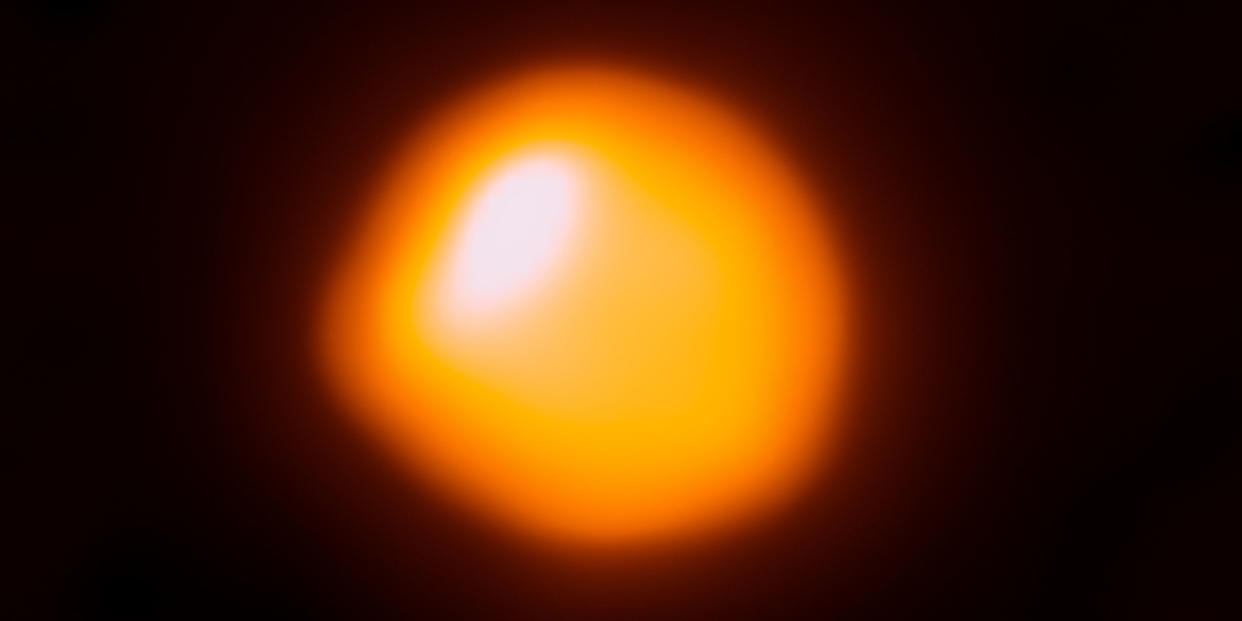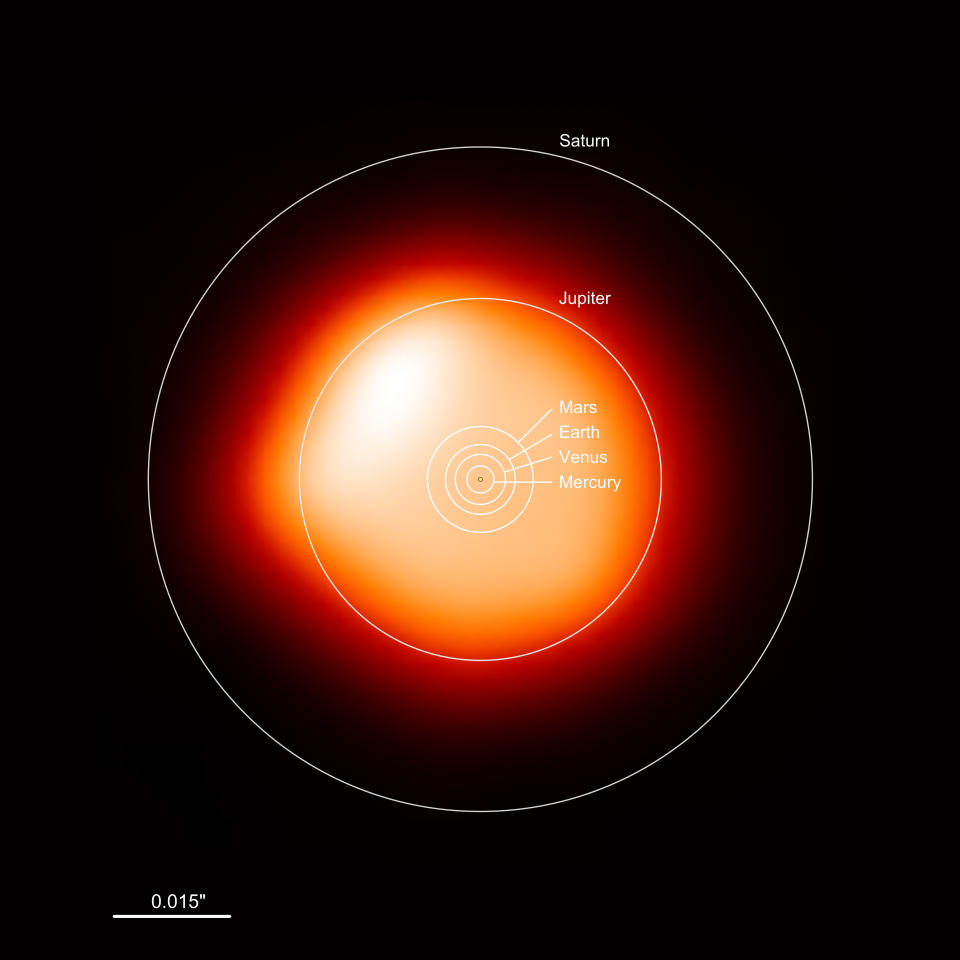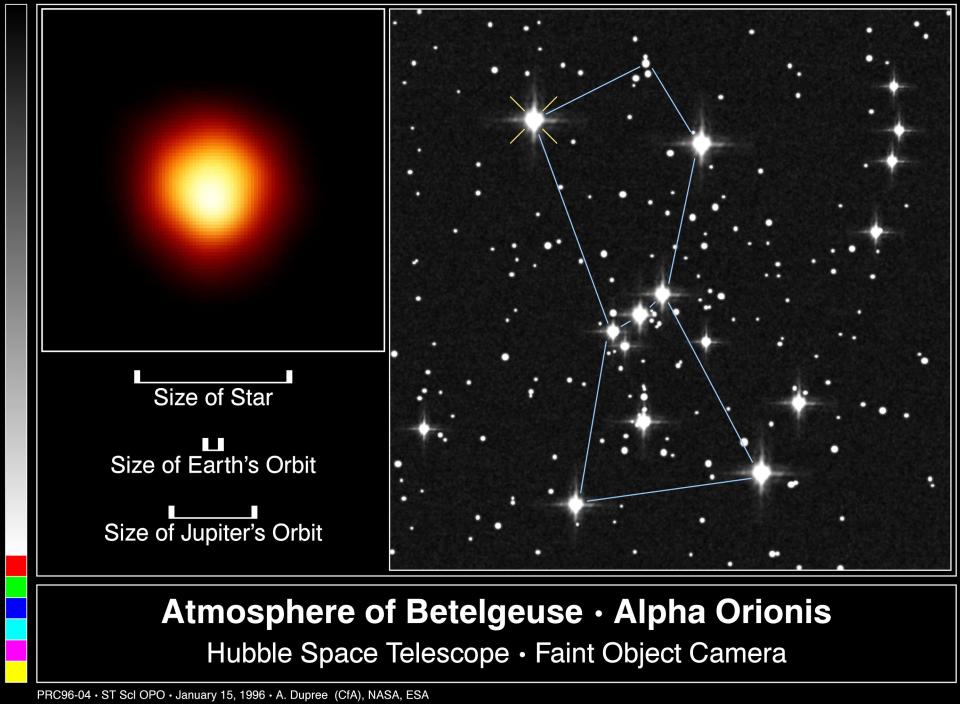Astronomers Release Most Detailed Image of a Star That's Not the Sun

A team of international astronomers led by the Dublin Institute for Advanced Studies recently used the Atacama Large Millimeter/submillimeter Array (ALMA)-the most powerful radio telescope in the world-to resolve the surface of a star. The result was the highest resolution image ever taken of the surface of a star other than the sun, as well as the first image of a stellar surface taken by ALMA. The photo shows microwaves in the submillimeter wavelength from the star Betelgeuse, one of the largest and brightest stars in the sky.
Betelgeuse is a red supergiant with a radius that stretches more than 600 million miles, about 1,400 times the radius of the sun. That gives Betelgeuse more than one billion times the volume of our host star. If the enormous star were at the center of our solar system, it would engulf every planet and asteroid out to beyond Jupiter. The gargantuan star, found in the Orion constellation, is the best star in the night sky for high resolution imaging, and it was the very first star other than the sun to be directly imaged.
"Located about 650 light-years away, Betelgeuse is certainly not the closest star to our solar system, but its sheer size makes it an ideal target to image directly with ALMA," Dr. Pierre Kervella, astronomer at the Paris Observatory, said in a press release. "When we look at the night sky with our naked eyes, we see bright stars everywhere, but because they are so small, even the most powerful telescopes in the world struggle to image their surfaces. Our results show ALMA has the capability to image the surfaces of the largest stars in detail."

The new study, published in the journal Astronomy & Astrophysics and available online, opens up a new area of study for ALMA. Previously the powerful radio telescope array had been used to image galaxies, comets, and protoplanetary disks. This is the first time ALMA has been used to take observations of the surface of a star, and the results led to a greater understanding of the volatile red supergiant Betelgeuse.
"ALMA now provides us with the capabilities to image surface features on nearby stars while also directly measuring the temperature of these features" said team lead Dr. Eamon O'Gorman, an astronomer at the Dublin Institute for Advanced Studies. "We have known for decades that the visible surface of Betelgeuse is not uniform, but ALMA has now shown in beautiful detail that the temperature in its inner atmosphere is also not uniform. It looks like these temperature fluctuations could be caused by magnetic fields, similar to what we see on the sun, our nearest star."

The new image of Betelgeuse and associated data help astronomers develop a more complete understanding of the processes the supergiant star goes through to eject heavy elements and other material out into space. The red monster is a mere 8 million years old, an infant compared to our 4.5-billion-year-old sun, but Betelgeuse is so enormous and volatile that astronomers believe it will supernova within the next million years-an explosion that would be visible from Earth in broad daylight. So get your pictures in while you still can.
Source: Dublin Institute for Advanced Studies
You Might Also Like

